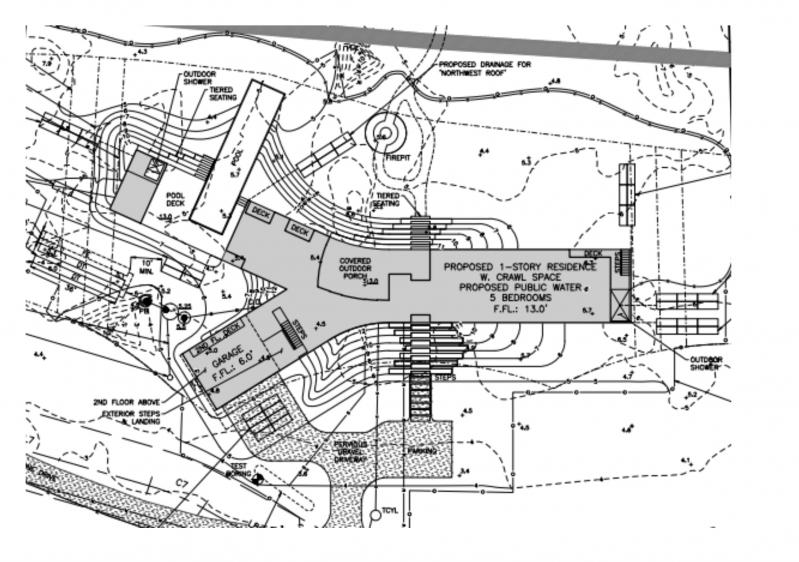A proposal to build a 4,373-square-foot house with about 3,000 square feet of decking, a pool, and attached garage at 20 Bendigo Road, the last parcel in a four-lot subdivision created in 1975 in the Devon area of Amagansett, was approved by the East Hampton Town Zoning Board of Appeals on Aug. 5, despite concerns about the extent of temporary clearing necessary for the construction.
Nearly 70 percent of the 11.6-acre lot is freshwater wetlands and it also contains a large dune separating it from 150 linear feet of frontage on Gardiner’s Bay. Because of all the environmental restrictions on the parcel, the buildable area is only about 2.6 acres.
The board unanimously supported the project, which required zero variances.
“I think, of course, no house would be better than a house in terms of the environment, but because a house is being built, I think there was care here and a certain amount of concern about what it will look like from the water side, which is always important to us,” said Ed Johann, a Z.B.A. member.
While every board member supported the project, agreeing that it met the standards to receive a natural resources special permit, which it needed due to its proximity to the dunes, each also agreed with Jaine Mehring, another Z.B.A. member, that the amount of dune to be cleared during construction was regrettably high.
“The one element of the application that continues to jump out at me is the 35,734 square feet of temporary clearing,” she said, which is nearly three times the amount of the final clearing, or 32 percent of the lot area.
Another project at 2 Bendigo Road requires only 16 percent of the lot to be cleared, even though it features a larger house.
“The applicant did insist that further modification of the temporary clearing is not feasible,” she sighed. “I do not have the expertise to second-guess the engineer and the architect to make a judgement of what it could, or should be, though it is a concern for me.”
She also said that a revegetation plan, which called only for beach grass, could be improved.
However, since the applicant agreed to an extended scenic conservation easement, and since the house is relatively modest compared to what could have been built, the board felt it easily met the standards to grant a natural resources special permit.




